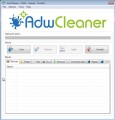If you’re reading this post, it means that you are seeing the Click To Continue unknown web page and your internet browser began opening a lot of advertisements. All of these problems with your personal computer caused by adware (sometimes named ‘ad-supported’ software), which is often installs on the system with the free programs. You probably want to know how to delete this ‘ad supported’ software as well as remove Click To Continue popups. In the step-by-step instructions below we will tell you about how to solve your problems.
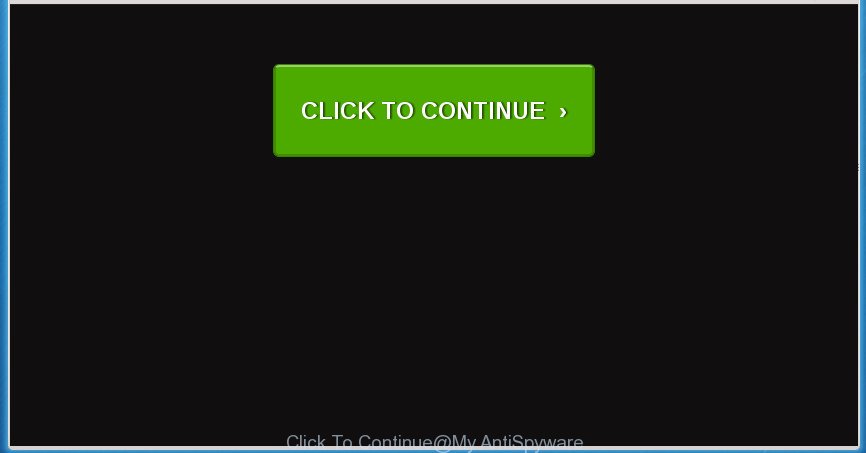
What is more, the adware may show ads depend on a web-page that you are visiting. That is, it’s clear that this adware, without your permission, steals your private information such as: your ip address, what is a web page you are viewing now, what you are looking for on the Internet, which links you are clicking, and much, much more. The ad-supported software may monetize its functionality by collecting data from your browsing sessions and selling it to third party companies. This puts your personal information at a security risk.
Table of contents
- What is Click To Continue
- Remove Click To Continue popup ads
- How to get rid of Click To Continue pop-ups without any software
- Uninstall Click To Continue related software through the Control Panel of your PC system
- Fix internet browser shortcuts, modified by adware
- Remove Click To Continue pop-up ads from Chrome
- Remove Click To Continue from Mozilla Firefox by resetting web-browser settings
- Remove Click To Continue redirect from Microsoft Internet Explorer
- Delete unwanted Scheduled Tasks
- How to delete Click To Continue redirect with free software
- How to get rid of Click To Continue pop-ups without any software
- How to block Click To Continue pop-ups
- How was adware installed on PC
- Finish words
Most often, the ad supported software affects the most common web browsers such as the Google Chrome, Firefox, Internet Explorer and Edge. But such the malicious software as well may infect another browsers by changing its shortcuts (adding an argument such as ‘http://site.address’ into Target field of a internet browser’s shortcut). So every time you launch the browser, it’ll redirect to the intrusive Click To Continue page. Even if you setup a new startpage, an undesired web page will be the first thing you see when you open the Google Chrome, Firefox, Internet Explorer and Microsoft Edge.
The guide below explaining steps to remove Click To Continue redirect problem. Feel free to use it for removal of the ad supported software that may attack Google Chrome, FF, Microsoft Edge and Internet Explorer and other popular web browsers. The guidance will allow you get rid of adware and thereby clean your web-browser from all unwanted advertisements.
Remove Click To Continue popup ads
There are several steps to deleting the ad-supported software that reroutes your browser to unwanted Click To Continue web-site, because it installs itself so deeply into Microsoft Windows. You need to uninstall all suspicious and unknown programs, then delete malicious extensions from the Mozilla Firefox, Google Chrome, Internet Explorer and MS Edge and other browsers you’ve installed. Finally, you need to reset your web-browser settings to remove any changes the adware has made, and then scan your PC with Zemana Anti-malware, Malwarebytes or AdwCleaner to ensure the adware is fully removed. It will take a while.
How to get rid of Click To Continue pop-ups without any software
The few simple steps will help you remove Click To Continue popup ads. These Click To Continue removal steps work for the Chrome, Internet Explorer, Firefox and MS Edge, as well as every version of MS Windows operating system.
Uninstall Click To Continue related software through the Control Panel of your PC system
First method for manual adware removal is to go into the Microsoft Windows “Control Panel”, then “Uninstall a program” console. Take a look at the list of software on your PC system and see if there are any suspicious and unknown applications. If you see any, you need to delete them. Of course, before doing so, you can do an Net search to find details on the program. If it is a potentially unwanted program, adware or malware, you will likely find information that says so.
Windows 8, 8.1, 10
First, click the Windows button
Windows XP, Vista, 7
First, click “Start” and select “Control Panel”.
It will open the Windows Control Panel as shown on the screen below.
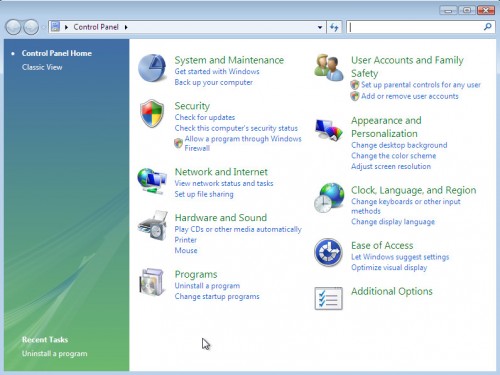
Next, click “Uninstall a program” ![]()
It will display a list of all programs installed on your computer. Scroll through the all list, and delete any suspicious and unknown software. To quickly find the latest installed programs, we recommend sort applications by date in the Control panel.
Fix internet browser shortcuts, modified by adware
Important to know, most antimalware programs that are able to delete adware, but unable to find and recover changed shortcuts. So, you need to fix the desktop shortcuts for your Firefox, Chrome, Internet Explorer and MS Edge browsers manually.
Open the properties of the web-browser shortcut. Right click on the shortcut of infected web browser and select the “Properties” option and it will display the properties of the shortcut. Next, choose the “Shortcut” tab and have a look at the Target field like below.

Normally, if the last word in the Target field is chrome.exe, iexplore.exe, firefox.exe. Be sure to pay attention to the extension, should be “exe”! All shortcuts that have been modified by adware like Click To Continue usually point to .bat, .cmd or .url files instead of .exe like below

Another variant, an address has been added at the end of the line. In this case the Target field looks like …Application\chrome.exe” http://site.address as shown below.

In order to fix a shortcut, you need to insert right path to the Target field or remove an address (if it has been added at the end). You can use the following information to fix your shortcuts which have been changed by ‘ad supported’ software.
| Google Chrome | C:\Program Files (x86)\Google\Chrome\Application\chrome.exe |
| C:\Program Files\Google\Chrome\Application\chrome.exe | |
| Mozilla Firefox | C:\Program Files\Mozilla Firefox\firefox.exe |
| Internet Explorer | C:\Program Files (x86)\Internet Explorer\iexplore.exe |
| C:\Program Files\Internet Explorer\iexplore.exe | |
| Opera | C:\Program Files (x86)\Opera\launcher.exe |
| C:\Program Files\Opera\launcher.exe |
Once is complete, click OK to save changes. Repeat the step for all browsers that are rerouted to the Click To Continue intrusive page.
Remove Click To Continue pop-up ads from Chrome
Like other modern web-browsers, the Chrome has the ability to reset the settings to their default values and thereby recover the browser’s settings like start page, new tab page and default search engine that have been changed by the adware that causes multiple annoying ads and pop ups.

- First run the Google Chrome and click Menu button (small button in the form of three horizontal stripes).
- It will display the Google Chrome main menu. Select “Settings” option.
- You will see the Chrome’s settings page. Scroll down and click “Show advanced settings” link.
- Scroll down again and click the “Reset settings” button.
- The Chrome will display the reset profile settings page as shown on the image above.
- Next click the “Reset” button.
- Once this task is complete, your web browser’s new tab page, home page and search engine by default will be restored to their original defaults.
- To learn more, read the post How to reset Google Chrome settings to default.
Remove Click To Continue from Mozilla Firefox by resetting web-browser settings
If the Mozilla Firefox web browser application is hijacked, then resetting its settings can help. The Reset feature is available on all modern version of Firefox. A reset can fix many issues by restoring FF settings like new tab, home page and search engine by default to its default state. It will save your personal information like saved passwords, bookmarks, and open tabs.
Click the Menu button (looks like three horizontal lines), and click the blue Help icon located at the bottom of the drop down menu as shown on the image below.
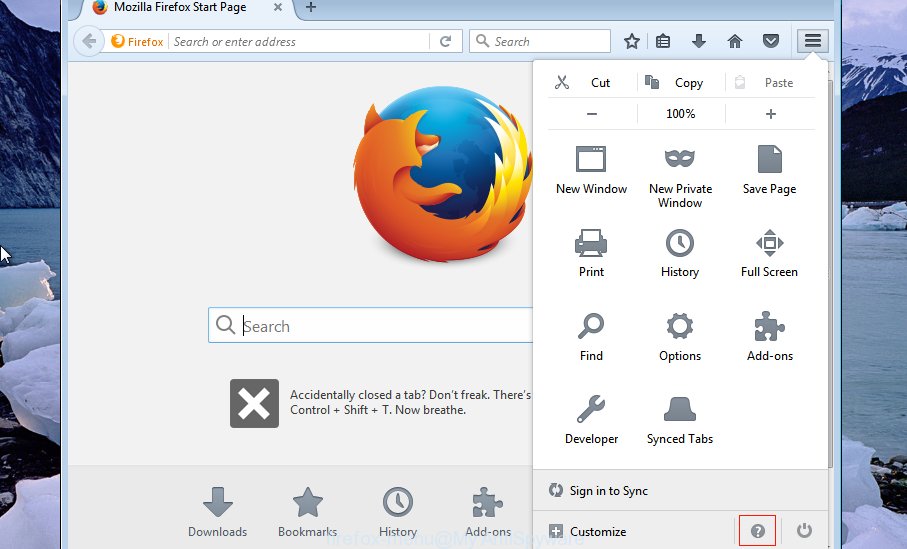
A small menu will appear, press the “Troubleshooting Information”. On this page, press “Refresh Firefox” button as on the image below.

Follow the onscreen procedure to return your Mozilla Firefox web-browser settings to its original state.
Remove Click To Continue redirect from Microsoft Internet Explorer
If you find that Internet Explorer web browser settings such as homepage, newtab and default search engine having been changed by adware that causes tons of intrusive Click To Continue pop-ups, then you may revert back your settings, via the reset internet browser procedure.
First, run the Internet Explorer, click ![]() ) button. Next, press “Internet Options” as shown on the screen below.
) button. Next, press “Internet Options” as shown on the screen below.

In the “Internet Options” screen select the Advanced tab. Next, click Reset button. The Internet Explorer will open the Reset Internet Explorer settings prompt. Select the “Delete personal settings” check box and press Reset button.

You will now need to restart your computer for the changes to take effect. It will get rid of Click To Continue pop up ads, disable malicious and ad-supported web-browser’s extensions and restore the Internet Explorer’s settings like newtab, homepage and search engine by default to default state.
Delete unwanted Scheduled Tasks
Once installed, the adware can add a task in to the Windows Task Scheduler Library. Due to this, every time when you open your machine, it will display Click To Continue annoying web-page. So, you need to check the Task Scheduler Library and get rid of all malicious tasks which have been created by ‘ad-supported’ application.
Press Windows and R keys on your keyboard at the same time. It will display a dialog box that titled as Run. In the text field, type “taskschd.msc” (without the quotes) and click OK. Task Scheduler window opens. In the left-hand side, press “Task Scheduler Library”, as shown in the figure below.
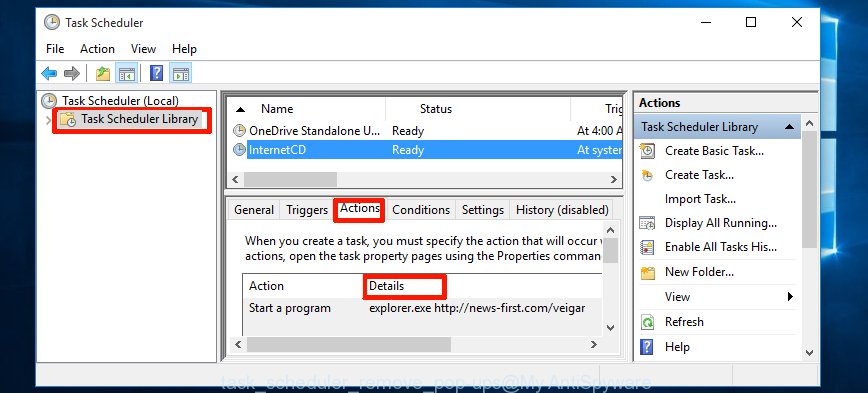
Task scheduler, list of tasks
In the middle part you will see a list of installed tasks. Select the first task, its properties will be open just below automatically. Next, click the Actions tab. Necessary to look at the text which is written under Details. Found something like “explorer.exe http://site.address” or “chrome.exe http://site.address” or “firefox.exe http://site.address”, then you need get rid of this task. If you are not sure that executes the task, then google it. If it is a component of the unwanted programs, then this task also should be removed.
Further press on it with the right mouse button and select Delete as shown on the image below.

Task scheduler, delete a task
Repeat this step, if you have found a few tasks that have been created by ‘ad-supported’ program. Once is done, close the Task Scheduler window.
How to delete Click To Continue redirect with free software
If your machine is still infected with ad-supported software that designed to reroute your browser to various ad web pages like Click To Continue, then the best way of detection and removal is to use an anti-malware scan on the system. Download free malicious software removal utilities below and launch a full system scan. It will help you delete all components of the adware from hardisk and Windows registry.
Run Zemana Anti-malware to delete Click To Continue pop up advertisements
Zemana Anti-malware highly recommended, because it can detect security threats such adware and ad supported softwares which most ‘classic’ antivirus software fail to pick up on. Moreover, if you have any Click To Continue pop-up ads removal problems which cannot be fixed by this utility automatically, then Zemana Anti-malware provides 24X7 online assistance from the highly experienced support staff.
Download Zemana Anti-Malware on your personal computer by clicking on the link below. Save it on your desktop.
165074 downloads
Author: Zemana Ltd
Category: Security tools
Update: July 16, 2019
Once the download is finished, close all windows on your PC. Further, start the install file called Zemana.AntiMalware.Setup. If the “User Account Control” dialog box pops up as shown below, click the “Yes” button.
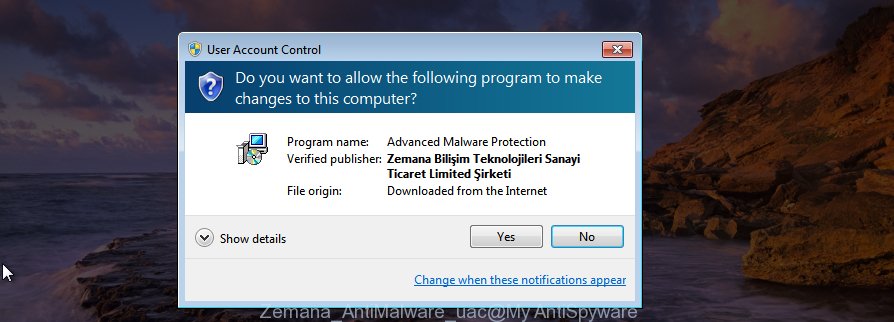
It will open the “Setup wizard” that will help you install Zemana Anti-Malware on the system. Follow the prompts and do not make any changes to default settings.
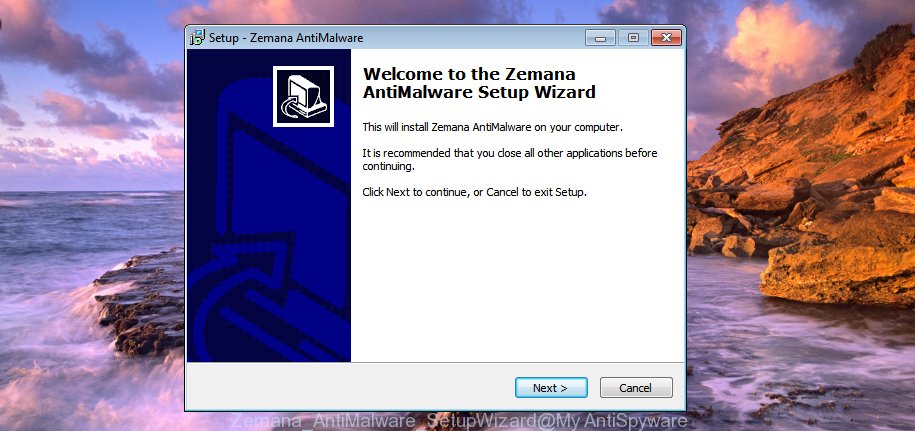
Once install is finished successfully, Zemana AntiMalware will automatically start and you may see its main window as shown on the image below.
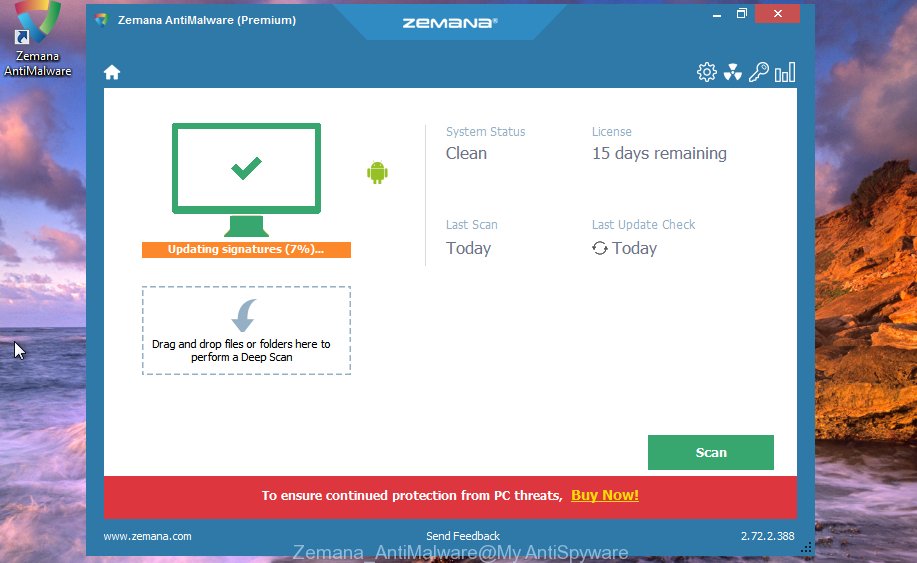
Next, press the “Scan” button . This will begin scanning the whole system to find out ad-supported software that redirects your browser to unwanted Click To Continue web-site. A system scan can take anywhere from 5 to 30 minutes, depending on your personal computer. While the tool is scanning, you may see number of objects it has identified as being infected by malicious software.

Once the scan is finished, you can check all items found on your computer. Review the report and then click “Next” button.
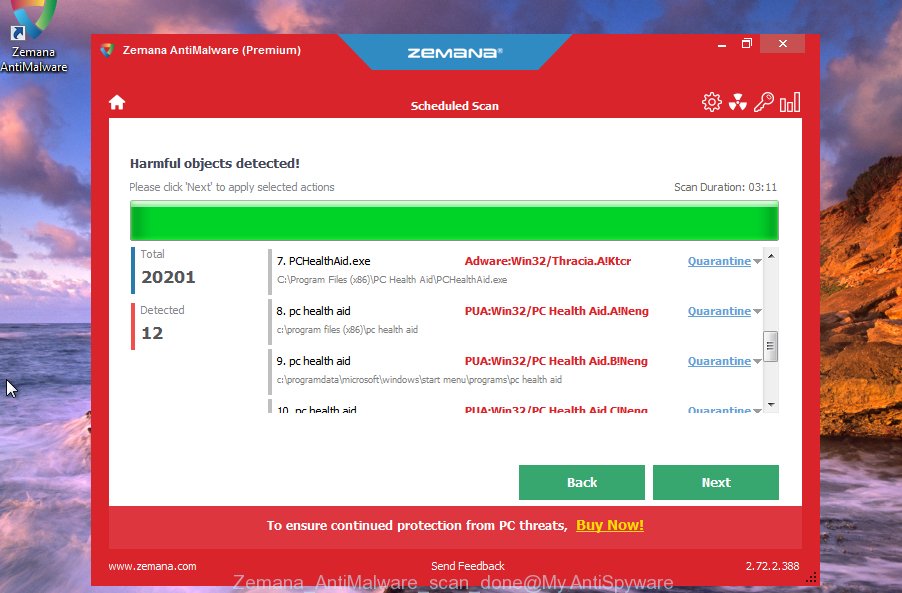
The Zemana Anti-Malware will remove adware that cause intrusive Click To Continue pop ups to appear and move items to the program’s quarantine. Once the cleaning procedure is complete, you can be prompted to restart your personal computer.
Run Malwarebytes to remove Click To Continue redirect
Manual Click To Continue redirect removal requires some computer skills. Some files and registry entries that created by the ad-supported software can be not completely removed. We suggest that run the Malwarebytes Free that are completely free your computer of ad-supported software. Moreover, the free application will allow you to delete malware, PUPs, browser hijacker infections and toolbars that your PC may be infected too.
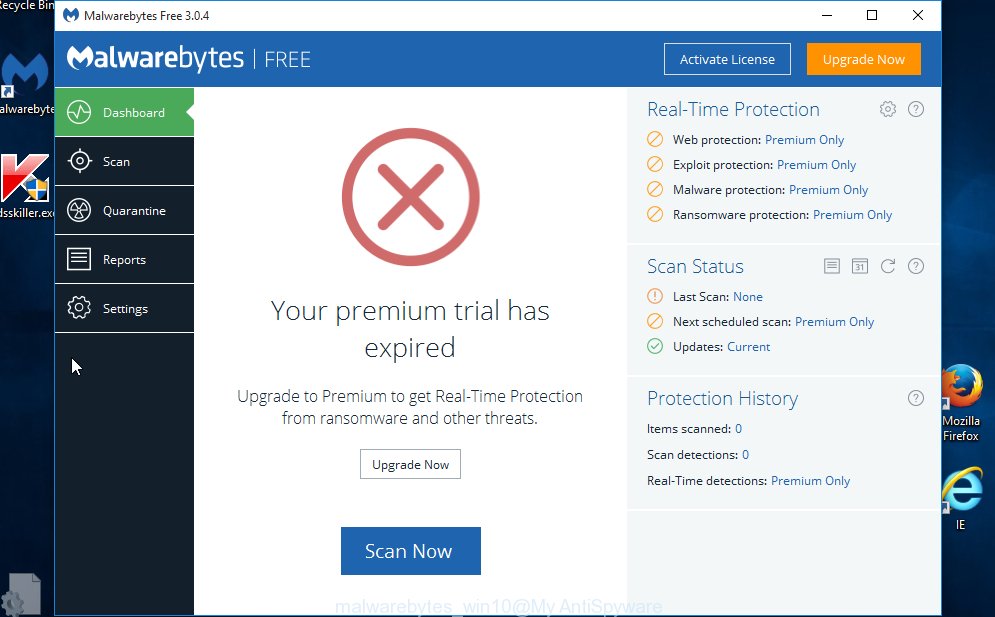
- Download Malwarebytes (MBAM) from the link below.
Malwarebytes Anti-malware
327297 downloads
Author: Malwarebytes
Category: Security tools
Update: April 15, 2020
- After the downloading process is done, close all programs and windows on your PC. Open a folder in which you saved it. Double-click on the icon that’s named mb3-setup.
- Further, press Next button and follow the prompts.
- Once installation is finished, press the “Scan Now” button to begin scanning your computer for the ‘ad supported’ software that causes internet browsers to display intrusive Click To Continue pop-ups. A scan may take anywhere from 10 to 30 minutes, depending on the count of files on your computer and the speed of your personal computer. When a threat is found, the count of the security threats will change accordingly.
- After the system scan is complete, it will open you the results. Review the results once the utility has finished the system scan. If you think an entry should not be quarantined, then uncheck it. Otherwise, simply press “Quarantine Selected”. After that process is complete, you can be prompted to restart your PC.
The following video offers a step-by-step instructions on how to remove hijackers, adware and other malicious software with Malwarebytes.
Remove Click To Continue redirect and malicious extensions with AdwCleaner
If MalwareBytes antimalware or Zemana anti-malware cannot remove this ad-supported software, then we recommends to run the AdwCleaner. AdwCleaner is a free removal tool for hijacker infections, PUPs, toolbars and adware which causes annoying Click To Continue popup ads.

- Download AdwCleaner by clicking on the link below.
AdwCleaner download
225642 downloads
Version: 8.4.1
Author: Xplode, MalwareBytes
Category: Security tools
Update: October 5, 2024
- Once the download is complete, double click the AdwCleaner icon. Once this tool is started, press “Scan” button to perform a system scan for the ‘ad supported’ software that causes browsers to display undesired Click To Continue ads. A system scan can take anywhere from 5 to 30 minutes, depending on your PC system. While the tool is scanning, you can see how many objects and files has already scanned.
- When it completes the scan, the results are displayed in the scan report. Review the scan results and then press “Clean” button. It will open a prompt, click “OK”.
These few simple steps are shown in detail in the following video guide.
How to block Click To Continue pop-ups
By installing an ad blocker program such as AdbGuard, you are able to block Click To Continue, autoplaying video ads and delete a large count of distracting and unwanted ads on web pages.
Download AdGuard application from the following link.
26905 downloads
Version: 6.4
Author: © Adguard
Category: Security tools
Update: November 15, 2018
After the downloading process is finished, launch the downloaded file. You will see the “Setup Wizard” screen as on the image below.
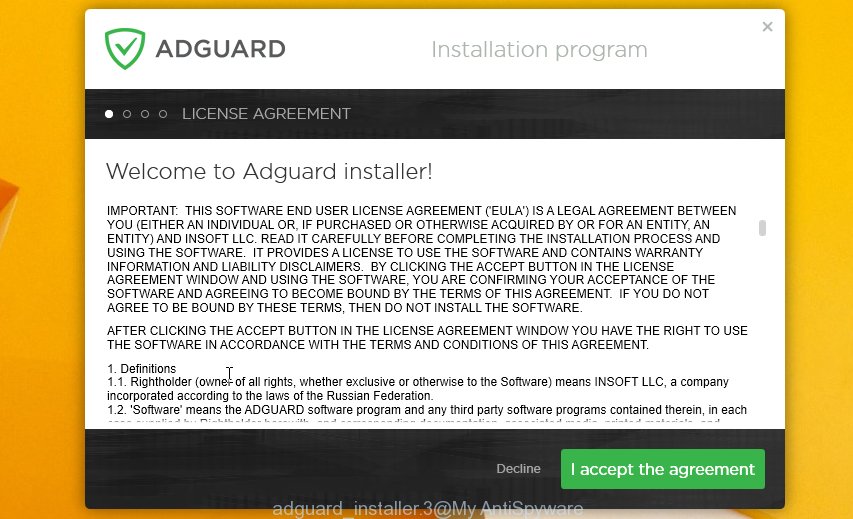
Follow the prompts. When the setup is complete, you will see a window like below.

You can click “Skip” to close the install program and use the default settings, or press “Get Started” button to see an quick tutorial which will allow you get to know AdGuard better.
In most cases, the default settings are enough and you don’t need to change anything. Each time, when you start your computer, AdGuard will start automatically and stop advertisements, Click To Continue pop-ups, as well as other malicious or misleading sites. For an overview of all the features of the application, or to change its settings you can simply double-click on the AdGuard icon, that is located on your desktop.
How was adware installed on PC
Most often the ad-supported software spreads bundled with freeware. So, think back, have you ever download and run any free applications? Because most users, in the Setup Wizard, simply click the Next button and do not read any information such as ‘Terms of use’ and ‘Software license’. This leads to the fact that the computer is infected and all your web-browsers configured to open a ton of annoying Click To Continue advertisements. Even removing the free applications that contains this adware, the annoying pop-up advertisements does not disappear. Therefore, you must follow the guidance above to free your machine from the ‘ad supported’ software and thereby delete Click To Continue pop ups.
Finish words
Now your machine should be clean of the ad supported software that cause annoying Click To Continue advertisements to appear. Delete AdwCleaner. We suggest that you keep Zemana Anti-malware (to periodically scan your PC for new malware, browser hijackers and ad-supported software) and AdGuard (to help you stop undesired ads and malicious pages). Moreover, to prevent ad supported software, please stay clear of unknown and third party programs, make sure that your antivirus program, turn on the option to find PUPs (potentially unwanted programs).
If you need more help with Click To Continue advertisements related issues, go to our Spyware/Malware removal forum.

